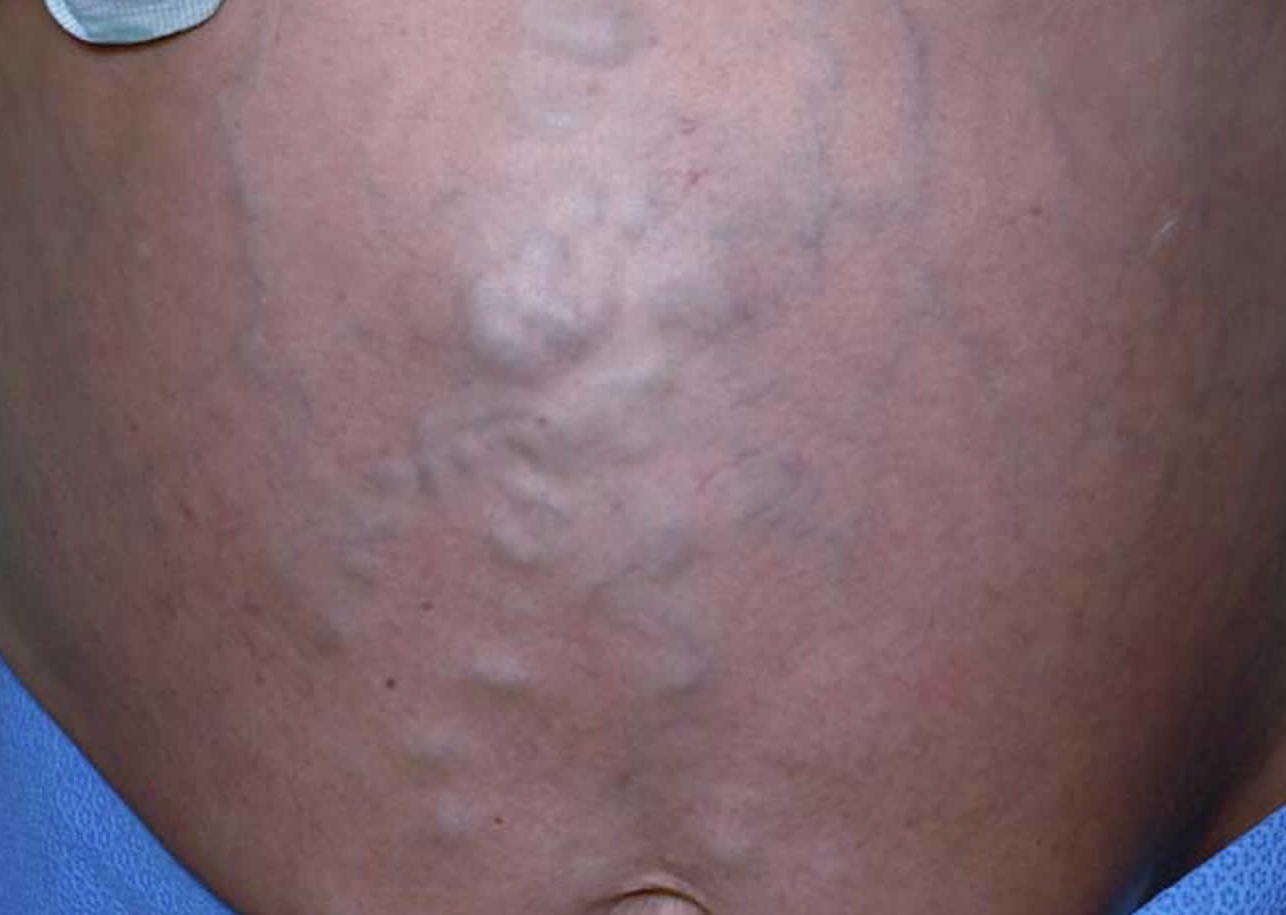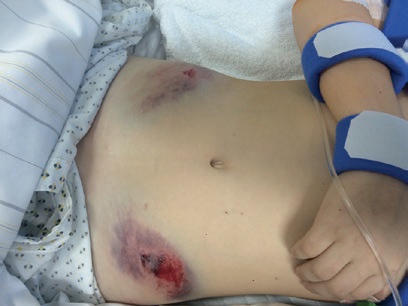Abdomen
Abdominal auscultation should be performed prior to palpation and percussion, as these actions may disrupt normal bowel sounds.
| Component | Inspection | Auscultation | Palpation | Percussion |
|---|---|---|---|---|
| General | ||||
| Respiratory | ||||
| Cardiovascular |
|
|
||
| Neurological | ||||
| Endocrine and Metabolic | ||||
| Renal | ||||
| Gastrointestinal |
|
|
|
|
| Haematological |
|
|||
| Integumentary | ||||
| Trauma |
|
|||
| Infective | ||||
| Malignant | ||||
| Toxic | ||||
| Immune |
|
|||
| Congenital | ||||
| Obstetric |
|
Findings
Gastrointestinal
- Caput medusae
Prominent periumbilical veins indicate portosystemic collateral formation secondary to portal hypertension or IVC syndrome.

- Bowel sounds
Presence of normal bowel sounds is a strong predictor of normal bowel perfusion in the critically ill. Absence is generally non-specific, although no sounds for >60s may indicate paralytic ileus.
- Hepatic venous hum
Continuous roaring noise suggestive of portal hypertension.
- Hepatic friction rub
Suggestive of hepatic capsular inflammation and malignancy.
- Percussion for ascites
- Dependent ascites produces a dull sound
Absence of flank dullness suggests no ascites is present.
- Dependent ascites produces a dull sound
- Percussion for liver size
Note the change from resonance to dullness, percussing caudally from the right hemithorax to the abdomen.
- Liver palpation
Advance the hand from the right iliac fossa towards the right costal margin. Ascertain:- Texture
Hard or soft. - Surface
Regular or irregular. - Tenderness
Indicates capsular tension. - Pulsatility
- Texture
Trauma
- Seatbelt sign
Abdominal (and/or chest) wall bruising associated with a 3-point restraint. Indicates a high-energy mechanism and a high risk of internal injury.

References
- Foot C, Steel L, Vidhani K, Lister B, MacPartlin M, Blackwell N. Examination Intensive Care Medicine. Elsevier Australia; 2011. (Examination series).